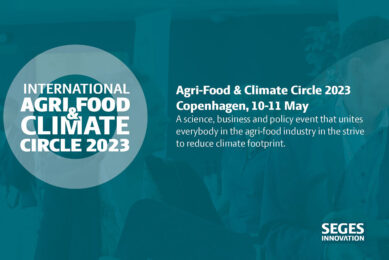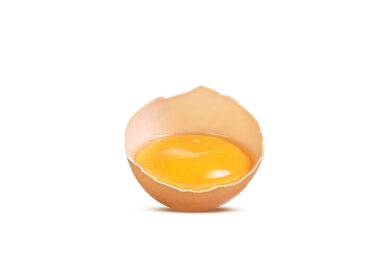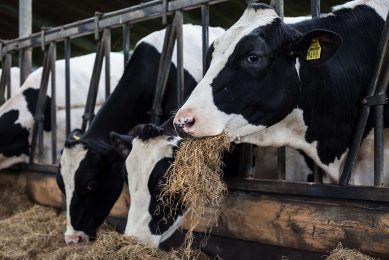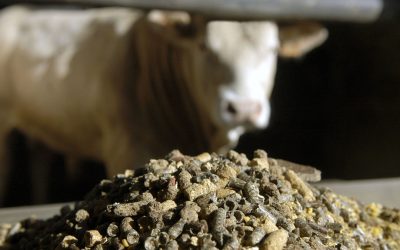Shedding light in the corn for fuel or food debate
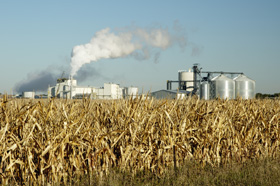
Using corn for fuel instead of foods or feeds has been debated since ethanol became a compulsory source for car fuels in the US. Now with several years of experience in ethanol production it is clear that the US corn-supply is not in danger. A future question might even be what to do with surplus corn.
By Dave Vander Griend*
In the long and successful history of first-generation ethanol (i.e. ethanol from starch) -and despite the significant energy, economic and environmental benefits it has provided – the critics remain. Even in the best of times, as ethanol proved to be a catalyst for a renaissance in rural America, there were whispers: “They are using food to make fuel.” Even as the new ethanol market demand resulted in a new generation of farmers and technology, the misinformed questioned how the US could fashion energy policy out of what they perceived to be food products.
“We will run out of food”, they said. “We should be feeding people, not our gas tanks.” Stoked by a very successful misinformation campaign against ethanol, some came to the conclusion that more ethanol meant less food – and more expensive food.The fact is that corn production has not only met the increased demand for ethanol, but has also led to US farmers meeting (and often exceeding) every other demand sector. How can that be possible? The critics leap to the conclusion that farmers must be using more land -pristine, conservation land -even our national forests! And if this is indeed the case, farmers must not only be reducing our food supply but generating carbon emissions in the process. The chorus of critics and detractors – people apparently opposed to the greater choice and control that a competitive biofuels market offers – grew louder and falsely faulted the ethanol industry for increasing CO2, generating greenhouse gases (GHG) and contributing to climate change. On top of this, the “food and fuel” debate reached near hysteria toward the end of 2007, throughout 2008 and well into 2009. Ethanol was targeted as the culprit for rising food prices, with little attention paid to the facts (such as the significant impact of petroleum-based energy costs at every stage of food production and distribution) — or to what is really happening in American agriculture today.
As commodity prices have returned closer to norms prior to the dramatic speculation-driven increase, we need to take a deep breath and understand the truth. We are meeting the increase in demand for fuel, while feeding more people through exports – and unleashing technology in every aspect of corn production. American farmers are using less land to produce more corn – continuing a 50-year trend of more bushels per acre. And there is every reason to believe this trend will continue. The area in the US planted with corn has decreased from peak land use of 112 million acres in 1933 to around 85 million acres over the last few years, a decrease of 24%. Average yields however in the same period have increased form 26 bushels/acre in 1933 to 156 bushels/acre in 2008, a six-fold rise.
t
Net impact of corn usage for ethanol
As productivity on the farm and in the ethanol plants increases, it is critical to understand the net impact of corn ethanol on the corn supply. Many believe that so-called “energy crops” such as switchgrass would be infinitely better for the environment than corn-based ethanol. Others contend that sugarcane is the “magic” feedstock given its high yield and low energy inputs. But for these non-food feedstocks, the story is one-dimensional. They produce no food ingredients or animal feed, so their value stops abruptly at ethanol production —and as such, their net value is considerably less than corn-based ethanol. (Table 1)
While “energy crops” hold great promise, they have not been grown or harvested in commercial quantities. There are numerous issues that may arise relative to relying on them for energy utilisation including storage, transportation, ethanol yield and overall logistics and marketing challenges yet to be addressed.
Making fuel and feed
Recognition of the co-products that come from ethanol production is absolutely fundamental to understanding the true value of corn as a food and energy crop. For the majority of ethanol plants in the US, the key co-product of ethanol production is dried distillers grains (DDG) – the high protein feed product that remains after low-value starch is removed to make fuel. DDG returns a substantial one-third by volume to the feed supply. And that’s not all: due to the high feed value of DDG, the nutritional value is 50% that of raw corn, even though the volume is just one-third. When we harvest an acre of corn for ethanol production, we’re actually only using half of the equivalent of that acre to make ethanol. The other half is returned in nutritional value to feed livestock for the human food supply. Dr. Terry Klopfenstein, an animal nutrition expert at the University of Nebraska, has concluded that the energy value of DDG when fed to cattle is as much as 145% of the original corn. He contends this feed credit needs to be calculated when determining the overall demand for corn for ethanol production. Essentially, every two bushels of corn that enters an ethanol plant returns the equivalent of one bushel to the feed chain. This is an extraordinary factor that must be considered when calculating the land use impact of corn ethanol – and, by extension, the carbon emissions associated with corn ethanol production. In effect, ethanol production extracts the fuel from the corn before returning the feed to the food production chain. And that feed has considerably higher value than the raw corn that entered the biorefinery.
No corn shortage
Corn for industrial use for food and animal feed (meat production) will likely remain flat or decrease in coming years, due primarily to changing diets in the US, where meat consumption is falling.
Corn exports are expected to remain relatively flat at 2 billion bushels annually. Corn used for ethanol will flatten at about 5.3 billion bushels per year as corn ethanol is essentially capped by the Renewable Fuels Standard (RFS). DDGs produced by ethanol plants will likely replace nearly one-half of the raw corn diverted from the feed market and used for ethanol. Combined with a higher feed conversion and lower price than raw corn, DDG is likely to displace raw corn in feed to the largest extent possible, pushing approximately 2.6 billion bushels of corn equivalent back into circulation. Those 2.6 billion bushels will join the already enormous projected carryouts of between 2 and 3 billion bushels, resulting in total annual carryout (surplus) of the US corn supply of 5 billion bushels per year in 2015.
This relentless growth in corn production (and thus supply) is driven mainly by the ever-growing average corn yield, as US farmers continue to grow more corn on less land. While corn acreage has fallen over the past eight decades, yield per acre has more than tripled, and yield growth is accelerating. These yield increases are the result of a number of efficiency measures – from conservation tillage to precision agriculture technology that allows farmers to reduce inputs, environmental impact and carbon emissions. Additionally, advancements in hybrid seed development have improved resistance to drought, pests and other stressors – dramatically reducing the need for water, chemicals and trips across the field, which is in contrast to the common (and wrong) assumption that this increase in productivity is the result of excess fertilisation.
Since we are unquestionably meeting increased corn demand from the same amount of land (or less) – and producing more food ingredients in the process (animal feed, sweeteners, etc.) – and exporting those value-added products – then corn-based ethanol has no significant impact on land use. Moreover, as productivity increases in both cornfields and within ethanol plants, corn ethanol may lay claim to reducing land use — another trend documented by USDA, National Agricultural Statistics Service (NASS).
Net corn usage
Perhaps the issue of net corn usage was best stated by five distinguished land grant university professors with extensive agronomic and agricultural expertise. In an April 2009 letter to key Obama Administration officials, these experts outlined three major points:
1. With a current industry average of 2.8 gallons of ethanol per bushel of feed corn processed – and with the near 50% return value of DDG – the net corn use is half of the 5.4 billion bushels reported by USDA, since 2.6 billion bushels are returned to the feed supply.
2. The net amount of corn needed to meet the RFS of 15 billion gallons of corn ethanol is just under 3 billion bushels. With significant increases in yield, there will not only be enough corn to meet every other demand sector including exports, but there will be looming surpluses.
3. The key to the current debate: The increased feed value and increased yields mean the RFS requires no new acres to produce ethanol — and consequently there are no land use changes and no increase in carbon emissions.
The US is simply proving it can make more fuel from its energy crop (feed corn) on less land with fewer inputs – all while increasing the supply of feed products. Clearly, US farmers and the US ethanol industry are already achieving the national goal of creating more fuel, feed and food – with less carbon. It is becoming increasingly clear that the production of advanced biofuels may take longer than Congress has prescribed, certainly in the aggressive quantities called for. Given the considerations of the true net value of corn ethanol, there is no reason to cap corn production. Doing so would curtail the | undeniable trend of productivity and yield that is within our reach.
*Dave Vander Griend is president and CEO of ICM, Inc., a Colwich, Kansas company that designs, builds and supports ethanol plants with a particular emphasis on improved process design and energy efficiency.
This article was abstracted from a white paper Griend published on www.ethanolacrosamerica.net
Source: Feed Tech magazine Volume 13. No 8




